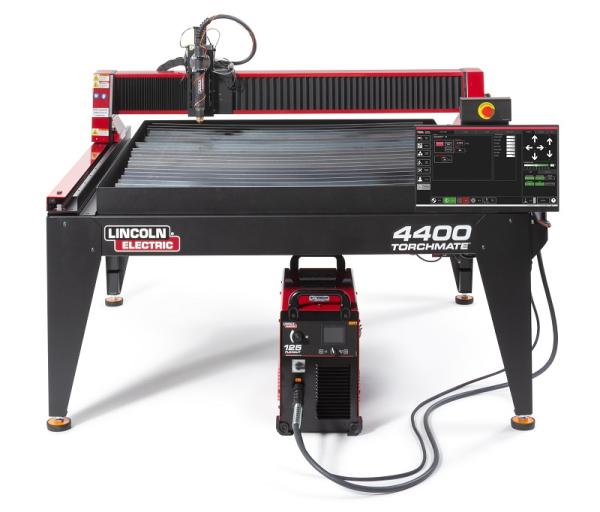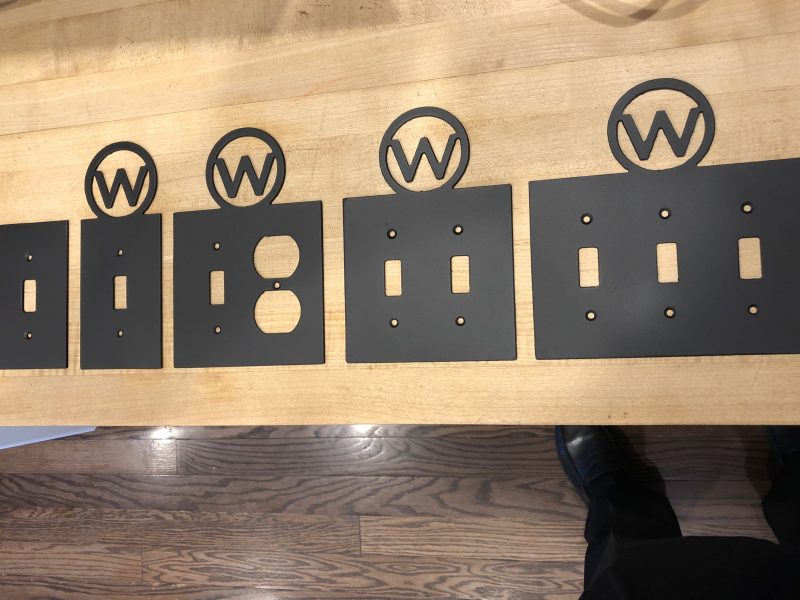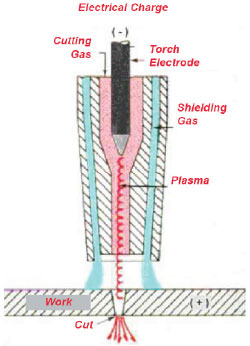Table of Contents
Are you considering building your own CNC plasma cutter but feeling overwhelmed by the task? Don’t worry, you’re not alone. Many people are intrigued by the idea of building their own machine but are intimidated by the technical aspects involved. However, with the right guidance and resources, building a CNC plasma cutter can be a challenging yet rewarding endeavor.
In this article, we will explore the basics of CNC plasma cutters, the materials and tools required, and the steps involved in building one. We will also provide tips and tricks to help make the process smoother and more manageable. So, whether you’re a seasoned DIYer or a beginner, read on to discover how hard it really is to build a CNC plasma cutter.
Building a CNC Plasma Cutter: A Challenging Yet Rewarding Project
1. Introduction
Building a CNC plasma cutter from scratch can be a challenging project, but it is also a rewarding one. With a CNC plasma cutter, you can cut intricate shapes and designs out of metal with ease. It is a valuable tool for metalworkers, artists, and DIY enthusiasts. However, building a CNC plasma cutter requires a certain level of skill, knowledge, and patience. In this article, we will discuss the process of building a CNC plasma cutter, the challenges you may encounter, and the benefits of having one.
2. Understanding CNC Plasma Cutting
Before you start building your CNC plasma cutter, it is important to understand how it works. A CNC plasma cutter is a computer-controlled cutting machine that uses a plasma torch to cut metal. It works by sending a signal from a computer to the plasma cutter’s controller, which then moves the torch in a precise pattern to cut the metal. The plasma cutter uses a high-temperature plasma arc to melt the metal and create a clean, precise cut.
3. Building the Frame
The first step in building a CNC plasma cutter is to build the frame. The frame is the foundation of the machine and must be strong and stable. You can use aluminum, steel, or even wood to build the frame. It should be designed to hold the cutting table, the gantry, and the plasma torch. The frame should also be adjustable to accommodate different sizes of metal sheets.
4. Designing the Cutting Table
The cutting table is where the metal sheet is placed for cutting. It should be made of a non-conductive material, such as high-density polyethylene, to prevent electrical interference. The cutting table should also be level and flat to ensure accurate cuts. You can design the cutting table to fit your specific needs and size requirements.
5. Building the Gantry
The gantry is the bridge-like structure that supports the plasma torch and moves it along the X and Y axes. It should be strong and stable to support the weight of the plasma torch and to ensure accurate cuts. You can use aluminum or steel to build the gantry, and it should be designed to move smoothly and accurately.
6. Installing the Electronics
The electronics are the brains of the CNC plasma cutter. They control the movement of the gantry and the plasma torch. You will need a stepper motor driver, a controller board, and a power supply for the electronics. You can purchase a pre-made electronics kit or build your own.
7. Installing the Plasma Torch
The plasma torch is the cutting tool of the CNC plasma cutter. It should be mounted securely to the gantry and be positioned at the correct height above the metal sheet for accurate cuts. The plasma torch should also be connected to the electronics so that it can be controlled by the computer.
8. Testing and Calibration
After you have built and installed all the components of your CNC plasma cutter, it’s time to test and calibrate it. You will need to test the movement of the gantry and the plasma torch to ensure they move smoothly and accurately. You will also need to calibrate the height of the plasma torch above the metal sheet for accurate cuts.
9. Benefits of Having a CNC Plasma Cutter
Having a CNC plasma cutter has many benefits. It allows you to cut intricate shapes and designs out of metal with ease. It is also faster and more accurate than cutting by hand. You can create custom metal parts for your projects, or even start a small business selling custom metal parts.
10. Conclusion: Building a CNC Plasma Cutter
Building a CNC plasma cutter is a challenging project, but it is also a rewarding one. With the right knowledge, skills, and patience, you can build a machine that will allow you to cut metal with ease. It is a valuable tool for metalworkers, artists, and DIY enthusiasts. So, if you are up for the challenge, start building your CNC plasma cutter today!
Freequently Asked Questions
Building a CNC plasma cutter can be a challenging task, especially if you have little experience with electronics or mechanical systems. However, with the right tools, parts, and instructions, it is possible to build a functioning CNC plasma cutter that can produce high-quality cuts. Here are some common questions and answers about building a CNC plasma cutter.
1. What are the basic components of a CNC plasma cutter?
A CNC plasma cutter consists of several key components, including a plasma torch, a CNC controller, a stepper motor, a power supply, and a cutting table. The plasma torch is used to cut through metal, while the CNC controller is responsible for directing the torch along the cutting path. Stepper motors are used to control the movement of the cutting table, and the power supply provides the necessary electrical power to operate the system.
Other components that may be required include a computer, software, and various mechanical parts such as linear bearings and lead screws. The specific components required will depend on the size and complexity of the CNC plasma cutter you are building.
2. How difficult is it to build a CNC plasma cutter?
Building a CNC plasma cutter can be a challenging task for those with little experience in electronics, mechanical systems, or welding. However, with the right tools, parts, and instructions, it is possible to complete the project successfully. It is important to have a clear understanding of the various components and how they work together, as well as a solid plan for assembling and testing the system.
It is recommended that you have some experience with electronics or mechanical systems before attempting to build a CNC plasma cutter. Additionally, it is important to take safety precautions when working with high-voltage electrical components and the plasma torch itself.
3. What tools and materials are needed to build a CNC plasma cutter?
The tools and materials required to build a CNC plasma cutter will depend on the specific design and size of the system. Some common tools required include a welder, drill press, angle grinder, and various hand tools such as pliers, wrenches, and screwdrivers. You may also need a computer, software, and various electronic components such as stepper motors, power supplies, and controllers.
In terms of materials, you will need steel tubing or other structural components for the cutting table, as well as linear bearings and lead screws to control the movement of the cutting head. You will also need a plasma torch and consumables such as electrodes and nozzles. The specific materials required will depend on the design of the CNC plasma cutter.
4. Can I save money by building my own CNC plasma cutter?
Building your own CNC plasma cutter can be a cost-effective option compared to purchasing a pre-built system. However, it is important to consider the cost of the necessary tools, materials, and components before getting started. Additionally, you may need to invest a significant amount of time and effort in the project, which may not be practical for everyone.
If you have experience with electronics, mechanical systems, or welding, building your own CNC plasma cutter can be a rewarding and cost-effective option. However, if you are new to these areas, it may be more practical to purchase a pre-built system or seek out professional assistance.
5. Where can I find instructions for building a CNC plasma cutter?
There are several resources available online for those looking to build their own CNC plasma cutter. Many DIY websites and forums offer detailed instructions and tutorials on the various components and assembly processes involved. Additionally, there are several books and instructional videos available that provide step-by-step guidance for building a CNC plasma cutter.
It is important to carefully research and evaluate the instructions and resources available before starting your project. Make sure that the instructions are clear, easy to follow, and suitable for your skill level and budget. Additionally, it is important to take safety precautions when working with high-voltage electrical components and the plasma torch itself.
In conclusion, building a CNC plasma cutter may seem like a daunting task, but it is undoubtedly achievable with the right guidance and tools. While it requires a fair amount of technical knowledge and experience, the satisfaction of creating a powerful and efficient cutting machine is unparalleled.
Moreover, while the process may take some time and effort, the benefits of having a CNC plasma cutter at your disposal are numerous. From increased productivity and precision to the ability to create intricate designs and parts, a well-built CNC plasma cutter can revolutionize your work.
In the end, whether you are a hobbyist or a professional, building a CNC plasma cutter is a challenge worth taking on. With the right mindset, resources, and determination, you can join the ranks of those who have successfully built their own cutting machines and enjoy the benefits for years to come.
Request a quote today!
[contact-form-7 id="1578" title="Contact form"]
Please compress the file into a ZIP or RAR file before uploading. Alternatively, send through your RFQ by email.
enquires@unitymanufacture.com





